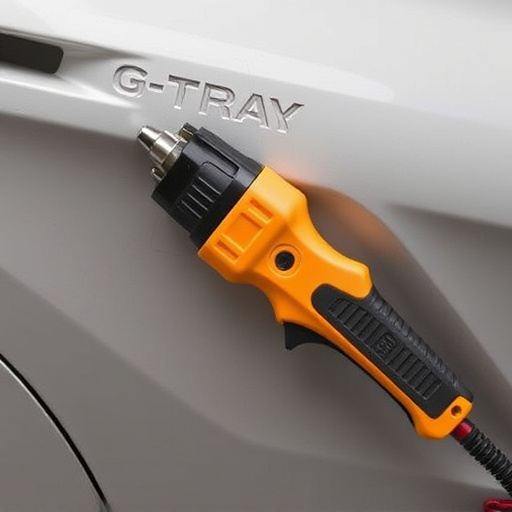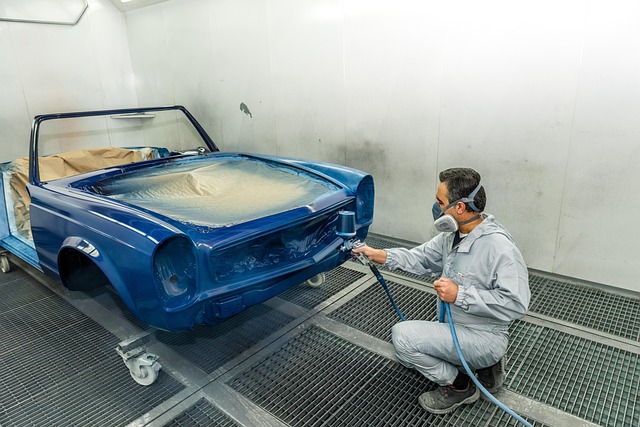In today's competitive auto repair market, managing customer repair expectations through transparency and timely service is key to boosting satisfaction and loyalty. This involves clear communication about work scope, timelines, and costs from the start, building trust with customers. Providing detailed estimates, breaking down complex procedures, and offering flexible service options earns repeat business and positive word-of-mouth referrals. Effective customer repair expectations management through open communication and regular updates strengthens customer relationships and enhances a shop's reputation as reliable and trustworthy.
In today’s competitive market, setting realistic customer repair expectations is paramount for maintaining satisfaction and loyalty. Understanding what customers genuinely expect from their repair services is the first step towards success. This article delves into the essentials of customer repair expectations, offering strategic insights and best practices to navigate this critical aspect of service delivery. By effectively communicating and managing expectations, businesses can enhance customer satisfaction and foster lasting relationships.
- Understanding Customer Repair Expectations: The Basics
- Setting Realistic Expectations: Strategies and Best Practices
- Communicating and Managing Expectations for Enhanced Customer Satisfaction
Understanding Customer Repair Expectations: The Basics

In today’s competitive market, understanding customer repair expectations is paramount for any auto maintenance or collision repair shop. Customers seek transparency and timely service when it comes to automotive repairs. It’s crucial to set realistic expectations from the outset, as this can significantly influence their satisfaction levels and loyalty towards your business. The basics involve clearly communicating the scope of work, estimated timeframes, and potential costs involved in the repair process.
By offering detailed estimates and breaking down complex procedures, you empower customers to make informed decisions. This approach fosters trust and ensures they are aligned with your team’s assessment of their vehicle’s needs. Remember, managing customer expectations is not just about setting goals; it’s about building a relationship based on honesty and integrity, which can ultimately drive repeat business and positive word-of-mouth referrals in the automotive repair sector.
Setting Realistic Expectations: Strategies and Best Practices

Setting realistic customer repair expectations early on is a strategic move that fosters trust and satisfaction. It involves clear communication about the scope, timeline, and cost of repairs, ensuring clients understand the process fully. To achieve this, businesses should employ several strategies. Firstly, providing detailed estimates based on thorough inspections helps set expectations for both the client and the workshop team. This prevents misunderstandings later in the repair process. Secondly, utilizing transparent pricing structures, broken down by part and labor costs, empowers customers to make informed decisions.
Additionally, offering a range of service options catering to different budgets and timelines is beneficial. For instance, prioritizing essential repairs over aesthetic ones can manage client expectations regarding turnaround time and expense. Regular updates during the repair process, highlighting milestones and any changes in scope or cost, further demonstrate transparency and professionalism. Engaging clients in these discussions ensures they feel heard and valued, ultimately leading to stronger customer relationships and positive word-of-mouth for auto bodywork services.
Communicating and Managing Expectations for Enhanced Customer Satisfaction

Effective communication is key to setting and managing customer repair expectations. By clearly explaining the scope of work, estimated timelines, and potential costs from the outset, businesses can ensure clients understand what to expect during the repair process. This proactive approach fosters trust and transparency, as customers feel informed and involved in decisions regarding their vehicles. For instance, when offering tire services or car bodywork repairs, detailing the steps involved in each service—from initial assessment to final quality check—can give clients a clear picture of the outcome.
Moreover, managing expectations goes beyond initial communication. Regular updates throughout the repair process, especially for more complex procedures like dent removal, demonstrate a commitment to keeping customers informed. This not only enhances customer satisfaction but also encourages positive word-of-mouth referrals. A satisfied client who feels their trust has been earned is more likely to become a loyal advocate for your business, promoting its reputation as a reliable and transparent automotive service provider.
By setting realistic customer repair expectations early on, businesses can significantly enhance customer satisfaction and loyalty. Understanding the basics of customer expectations and implementing effective strategies, such as clear communication and proactive management, ensures a positive experience for clients. This approach fosters trust and strengthens the relationship between the business and its customers, ultimately driving long-term success in an increasingly competitive market.













